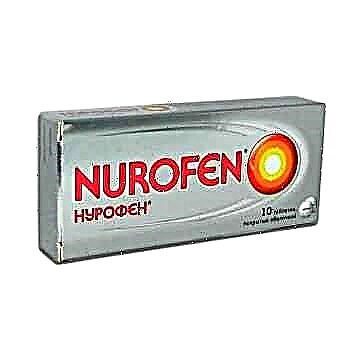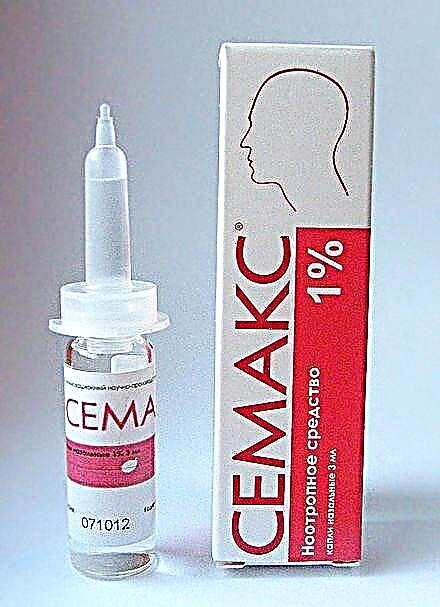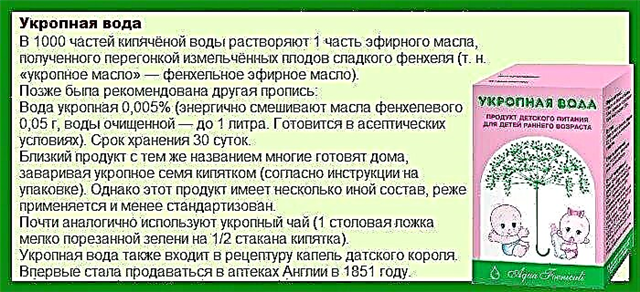
The appearance of a newly born child differs from the appearance of pink toddlers, which a woman contemplates in pictures of magazines during pregnancy. But you don't need to be afraid, because very soon the appearance of the crumbs will change. However, in order to avoid unnecessary worries, every pregnant woman should find out in advance what is the norm for the appearance of a newborn baby and should not cause a young mother to worry.

Head
The head circumference of a newborn is on average 33-35 centimeters. It may surprise a mother that a newborn's head is disproportionately large compared to the body. In addition, the baby's head may have an irregular shape. Most often, the head of the crumbs is oblong, since the baby passed through the birth canal. Don't worry, after a few weeks its shape will become round. Also note that in babies who were born by cesarean section, the shape of the head does not change (does not flatten).
Many babies experience swelling in the occiput during the first 24 hours after birth. It is called a birth tumor. The hair on the head of a newborn is usually dark, but this does not mean that the child will remain dark-haired. Most often there are quite a few of them, but some children have very rare hair.
There are two fontanelles on the head of a newborn baby. Most babies have a closed fontanelle. It can sometimes be found on the back of the baby's head. The large fontanelle is located on the top of the toddler's head and has a diamond shape. It can be of different sizes (up to 3x3 cm) and its closing speed is individual for each child. Parents can be scared to touch the fontanel, but they should not be afraid, since the fontanelle is quite strong and you cannot damage it by washing your head or brushing it.

Face
The face of the crumbs immediately after childbirth has a slight swelling, especially if the birth process was difficult. The cheeks may be squeezed and blue in color. The tip of the tongue of a newborn may appear to be forked.
A newborn has a small nose, which is often flattened. At the tip of the nose, you may notice white or yellowish dots, which are fatty glands that show through under the thin skin of the little one.
Eyes
At first, the eyes will be closed due to edema after childbirth, and the eyelids will be swollen, red or blue. Nearly all newly born babies have blue or gray eyes. If the blood vessels of the baby burst during childbirth, then the parents will notice redness on the baby's eyeballs, but there is no need to worry about this, because soon such red spots will dissolve.
The newborn baby's eyes are cloudy, and the eyes seem to be covered with a veil and constantly wandering.

The baby is trying to consider the surrounding objects, but he has not yet succeeded in focusing his gaze. Also, in some infants, strabismus is detected immediately after childbirth, which resolves by 6 months of age.
The child does not have tears at first after childbirth. In addition, many babies do not have eyebrows or eyelashes.
Leather
A newborn's body initially has a lot of a whitish substance called vernix. After rubbing the crumbs with oil, this substance is removed. Often in babies, the skin after childbirth is very dry for some time. It may even begin to flake off in the chest and abdomen.
The tint of the baby's skin is normally reddish-bluish, and the skin itself seems very thin. This skin tone does not at all indicate that the baby is cold. By the third day of life, the skin of the crumbs acquires a yellowish tint due to physiological jaundice.
On the baby's shoulders and back, you can see fine hairs called lanugo. If the baby is premature, there is much more such a gun on his body. Don't worry, these hairs will shrink and disappear in the first weeks of life.

Torso
The following features are noted in the torso of a newborn baby:
- The neck is short and the belly is bulging.
- The baby's chest circumference is 31-33 centimeters on average.
- The baby's mammary glands may be slightly swollen and milk may be released from them, which is normal and should not cause concern for parents (this condition is called a hormonal crisis).
- A newborn weighs on average 3400-3500 grams (boys are usually higher), and a baby's height is on average 50 cm (boys will also be larger).
Navel
A clamp is applied to the umbilical cord during childbirth, and the small section of the umbilical cord that remains under the clamp usually dries up before being discharged from the maternity ward. When the remainder of the umbilical cord falls off, a small wound remains on the body of the crumbs, which bleeds and soon becomes covered with a crust. The staff of the hospital tells and shows the new mother how to properly care for this wound.


Limbs
At first glance, the arms of a newborn are too long and constantly perform chaotic movements. The fists of the newly born child are clenched, and at rest, the legs and arms are pressed against the body (this position is called flexor). Since the baby has practically no subcutaneous fat, you will see the skin gathered in folds on the wrists.
Compared to the hands, the legs of the crumbs look short. This impression is only reinforced by their constant bent state. But the feet look very large.
For some time, the feet retain a bluish tinge associated with the peculiarities of the blood circulation of the crumbs. The skin on the feet is also very thin and looks wrinkled.
The baby's nails, although soft, are quite sharp and can leave scratches on the body of the crumbs, so they can be cut off immediately after childbirth. Only in premature crumbs, the nails after childbirth do not protrude beyond the tip of the nail bed, so they have nothing to cut off.

Genitals
A girl's labia and a boy's scrotum may be red and swollen. This is normal and depends on hormones released in the mother's body prior to giving birth.



